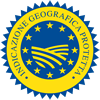Description
Arancia Rossa di Sicilia PGI is a fresh citrus fruit deriving from the Tarocco, Moro and Sanguinello blood orange varieties, characterised by the presence of anthocyanin, which gives the fruit its typical red colour, varying in intensity.
Production Area
The production area of Arancia Rossa di Sicilia PGI is within 32 municipalities in the provinces of Enna, Catania and Syracuse, in the Sicily region.
Production Method
The environmental and cultivation conditions of the groves destined for the production of Arancia Rossa di Sicilia PGI, must be those which are traditional of the area. The ripening period varies and provides an extensive production and harvesting calendar, which ranges from mid-December to the end of April. The Tarocco variety is generally harvested between December and May, the Moro variety is harvested between December and March, and the Sanguinello between February and April. Harvesting is carried out by hand with the help of special secateurs that cut the peduncle without damaging the peel. Degreening is not permitted after the fruit have been harvested.
Appearance and Flavour
Arancia Rossa di Sicilia PGI is either round or egg-shaped, and the colour of the peel varies: neutral orange with areas of ruby red, varying in intensity. The pulp is orange with irregular red streaks (Tarocco and Sanguinello varieties) or wine red (Moro variety). The product is rich in vitamins, polyphenols (flavonoids), folic acid and beneficial substances that aid digestion and increase the metabolism, as well as preventing infections and cellular aging thanks to the significant amount of antioxidants.
History
Arancia Rossa di Sicilia PGI originated in China and was already widespread throughout the Mediterranean in ancient times, although it was mainly used for decorative or religious purposes. The Arabs discovered its healthy properties during their rule (9th-11th century) and began using the fruit, but it only became a popular food in southern Italy in the 17th century. It is perhaps thanks to a certain Genoese missionary returning from the Philippines that dark red oranges arrived in Sicily, as recounted by the Jesuit Giovanni Battisti Ferrari (1646) in his book Hesperides sive de malorum aureorum cultura et usu. It was one of the most well-known products at the time of the Risorgimento battles, and in July 1860, the Count of Cavour, Camillo Benso, wrote the following in one of his telegrams, referring to Sicily, which had already been occupied by Garibaldi’s troops: “The oranges are on our table and we are about to eat them. But we have to wait for the macaroni, as they are not yet cooked.” Since the middle of the last century, the cultivation of blood-red oranges has played an increasingly important role in the Sicilian economy, both in terms of planted areas and actual production.
Gastronomy
Arancia Rossa di Sicilia PGI should be stored in a cool, dry place. It is delicious fresh, in segments, squeezed, or peeled by removing the white part near to the peel and the skin which separates the segments with a knife. It can also be used to make juices, marmalades, salads, sauces and liqueurs. The peel is used to make candied fruit, desserts, cakes and biscuits. In cooking it is used in both sweet and savoury dishes.
Marketing
The product is marketed as Arancia Rossa di Sicilia PGI in the following varieties: Tarocco, Moro and Sanguinello. It can be sold loose or in suitable packaging. The product is available between December and May.
Distinctive Features
Arancia Rossa di Sicilia PGI is distinguished by its unique red pigments, given to the presence of anthocyanins (above all Cyanidin-3-Glucoside), which only develops by spontaneous genetic mutation in this area, and by its high concentration of antioxidant substances.






























